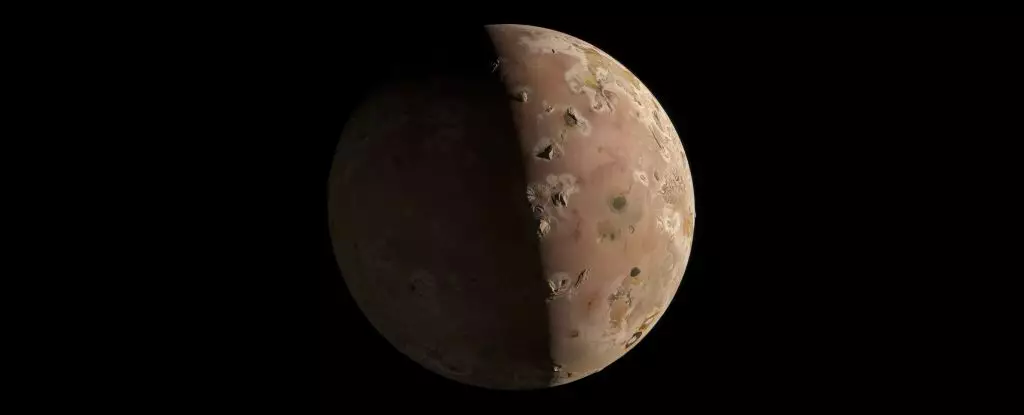Known for its intense volcanic activity, Jupiter’s moon Io presents a landscape unlike any other in the Solar System. With around 400 active volcanoes dotting its surface, Io is a spectacular display of fire and fury. Recent flybys by NASA’s Juno spacecraft have provided us with a closer look at some of the previously unseen regions of the moon, particularly its northern latitudes. The observations captured during these flybys have unveiled the mesmerizing beauty of Io’s untamed landscapes.
According to Scott Bolton, the principal investigator of the Juno probe, Io is “simply littered with volcanoes,” and the recent observations have captured some of these volcanoes in action. One notable feature is a 200-kilometer-long lava lake known as Loki Patera, which exhibits intricate details of islands surrounded by hot lava. The specular reflections observed on the surface of the lake hint at the presence of smooth glass-like areas, similar to obsidian glass found on Earth.
Despite its relatively small size, Io’s volcanic activity is a result of its complex interactions with its parent planet, Jupiter. The moon’s elliptical orbit around Jupiter subjects it to varying gravitational stresses, causing internal heating. Additionally, the gravitational pulls from other Galilean moons, Europa and Ganymede, contribute further to the stresses within Io, leading to the eruption of volcanic gases.
The volcanic emissions from Io form a plasma torus around Jupiter, generating powerful ultraviolet aurorae at the planet’s poles. This continuous process of volcanic activity has been ongoing for billions of years, as evidenced by the analysis of sulfur isotopes in Io’s atmosphere. The disproportionate ratio of the heavier sulfur isotope suggests that Io has been losing its lighter isotopes to the plasma torus throughout its lifespan.
As part of its ongoing mission, Juno will continue to conduct flybys of Io, Jupiter, and the other Galilean moons, providing scientists with valuable insights into the geological processes at play in the Jovian system. Io, with its fiery volcanoes and dynamic relationship with Jupiter, remains a captivating world that challenges our understanding of planetary dynamics.
The recent findings from Juno’s observations were presented at the European Geosciences Union General Assembly in Vienna, showcasing the latest discoveries about Io’s volcanic landscapes and the intricate interplay of forces that shape this unique moon. As we continue to unravel the mysteries of Io and the Jovian system, we are reminded of the sheer wonder and diversity of worlds that exist within our own cosmic backyard.



Leave a Reply